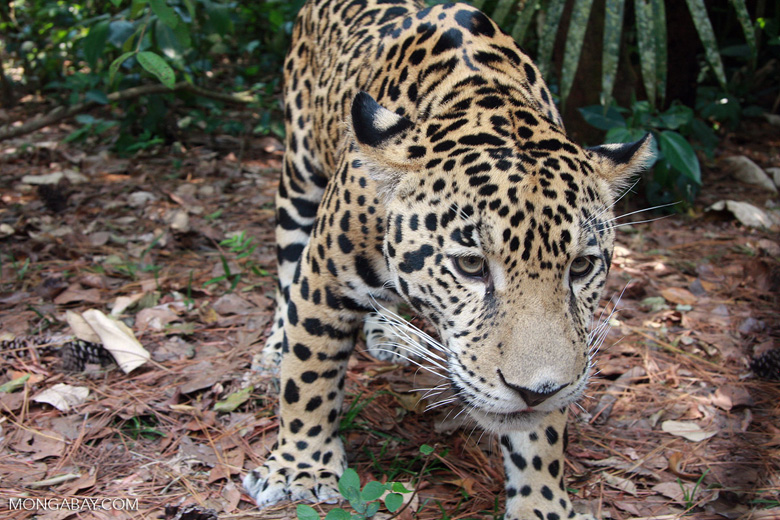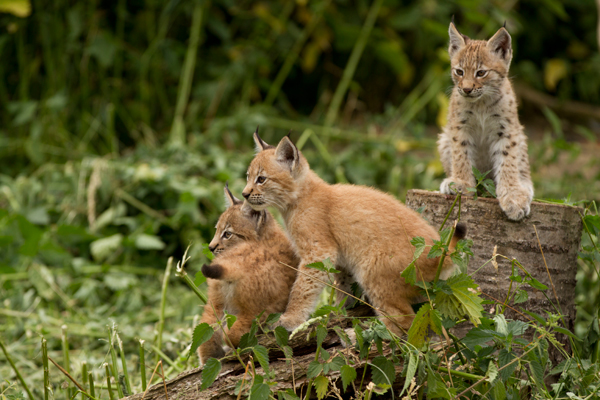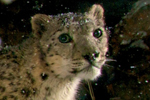Jaguar (photo)
Peru’s newest national park, Sierra del Divisor, provides habitat for jaguar, along with more than 30 other species of large mammal.
Jaguarundi in Costa Rica (photo)
The jaguarundi (Puma yagouaroundi) is a small cat that lives in a variety of ecosystems across to Central and South America.
Leopard stalking its prey (photo)
This leopard is stalking a group of impala in South Africa’s Mala Mala Game Reserve. More pictures of wild cats
Lynx triplets make their appearance at ZSL Whipsnade Zoo
By Natalie Millar At eight weeks old, the three lynx kittens Ruby, Amber and Opal finally made themselves known to the public, playing in the enclosure under the watchful eye of mother, Maja. Lynx litters usually remain inside a den constructed by the female until they’re big enough to venture outside, at around seven weeks old. With their characteristic ear tufts, the playful lynx kittens are frequently spotted napping on logs...
Update: interview on toxic pesticide used to kill wildlife (and endangering people) in Kenya
An interview in four parts with Paula Kahumbu, Executive Director of WildlifeDirect, provides detail and context on the use of the neurotoxic pesticide Furadan to kill lions and birds en masse in Kenya. Lions are down to around 2,000 individuals in Kenya. Kahumbu, recently awarded an Emerging Explorer by the National Geographic, and WildlifeDirect are working to pressure the government to estimate the environmental and human cost of...
Toxic pesticide used to kill birds by the thousands (warning: video is graphic)
A new video from WildlifeDirect shows the brutal impacts of the neurotoxic pesticide Furadan being used intentionally to kill entire flocks of birds, which are later sold as meat. Ducks, pigeons, and storks are often targeted. The process is brutal. “Based on a survey I did in 2009, 6,000 birds were killed every month. Tens of thousands are killed every year. I’m very concerned and I think man is at risk too–that is...
Photo: abused cheetahs returned to the wild
An adult cheetah, which had been smuggled and abused for the illegal pet trade, returns to the wild in Tanzania. Photo by: Annette Simonson. Few people realize that cheetah’s, one of Africa’s great cats, are a target of the global wildlife trade. Yet these speedy predators are sought as exotic ‘pets’, especially in the Middle East. As apart of this illegal pet trade, three adult cheetahs were recently seized at...
Camera trap catches snow leopards in Mongolia
Video is from an ongoing study by Panthera and the Snow Leopard Trust. It is the first comprehensive long-term study on snow leopards. This video was taken in August 2010 at the Tost Mountain study area in South Gobi, Mongolia where Panthera and the Snow Leopard Trust are collaborating. This film clip is actually 61 images taken about a half second apart by one of our remote automated cameras. We believe it is a mother and her nearly...
Photo: eye to eye
An emerald star? A disco ball? No, it’s the iris of a mountain lion in Belize. Photo by Rhett A. Butler.
Picture: puma in Belize
Puma in Belize.
“The Last Lions” trailer
Opening on February 18th, The Last Lions, a National Geographic film, follows a lioness and her two cubs’ dramatic journey of survival in the Okavango Delta of Botswana. Through the lions’ story the film addresses the catastrophic decline in lion populations across the continent, which have fallen from 450,000 to some 20,000 over the past 50 years. Shooting took place in Botswana over 7 years by veteran filmmakers Dereck...
Photo: Tiger cubs playing in the snow
Two Amur (Siberian) tiger cubs at the Wildlife Conservation Society’s Bronx Zoo roll around in the first snow of the season clearly enjoying the winter weather. The cubs and their mother can be seen year-round at the zoo’s Tiger Mountain exhibit.





